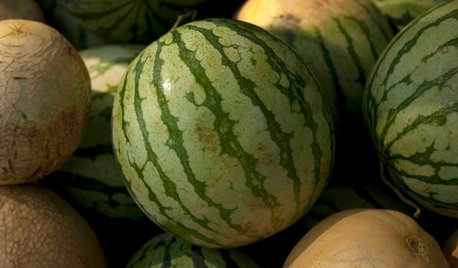Growing and Storing Feed for Livestock
Maggie_J
18 years ago
Related Stories

GARDENING FOR BIRDSFeed the Birds: 6 Plants for Abundant Winter Berries
Be kind to your fair feathered friends during lean food times by planting a shrub or tree loaded with nutritious snacks
Full Story
EDIBLE GARDENSHow to Grow Your Own Sweet Summer Crops
This guide will help any gardener get started on growing the freshest warm-season veggies and berries for summer
Full Story
GARDENING GUIDES15 Native Flowers That Feed Native Bees
These perennials offer superfood to hundreds of bees and are gorgeous in their own right
Full Story
FARM YOUR YARD6 Things to Know Before You Start Growing Your Own Food
It takes time and practice, but growing edibles in the suburbs or city is possible with smart prep and patience
Full Story
EDIBLE GARDENSSummer Crop: How to Grow Blueberries
Plant blueberries in spring or fall for garden beauty through three seasons — and a sweet superfood in summer
Full Story
EDIBLE GARDENSThe Enticing Garden: How to Grow Bananas
Sweeten your dining table with surprising flavors of banana cultivars while adding tropical flavor to your garden
Full Story
GARDENING GUIDESSummer Crops: How to Grow Melons
Drink in the refreshing sweetness of melons from your own garden this summer — they can last well into fall too
Full Story
FARM YOUR YARDHow to Grow Vegetables in Containers
Get glorious vegetables and fruits on your patio with a pro’s guidance — including his personal recipe for potting mix
Full Story
GARDENING AND LANDSCAPINGGrow a Lush Privacy Screen
No need to wait forever for patio privacy the green way. These 10 ideas will get your screening up and running in no time
Full Story
EDIBLE GARDENSSummer Crops: How to Grow Tomatoes
Plant tomato seedlings in spring for one of the best tastes of summer, fresh from your backyard
Full Story





mountainman_bc
Maggie_JOriginal Author
Related Professionals
San Juan Landscape Architects & Landscape Designers · Bethel Park Landscape Contractors · Canby Landscape Contractors · Chelmsford Landscape Contractors · Concord Landscape Contractors · Deer Park Landscape Contractors · Fuquay-Varina Landscape Contractors · Holland Landscape Contractors · Riverview Landscape Contractors · Southbury Landscape Contractors · University City Landscape Contractors · Uxbridge Landscape Contractors · Silver Firs Landscape Contractors · Farmington Siding & Exteriors · Kenosha Siding & Exteriorsmountainman_bc
huisjen
Maggie_JOriginal Author
mountainman_bc
Maggie_JOriginal Author
friedgreentom
Maggie_JOriginal Author
farmfreedom
markapp